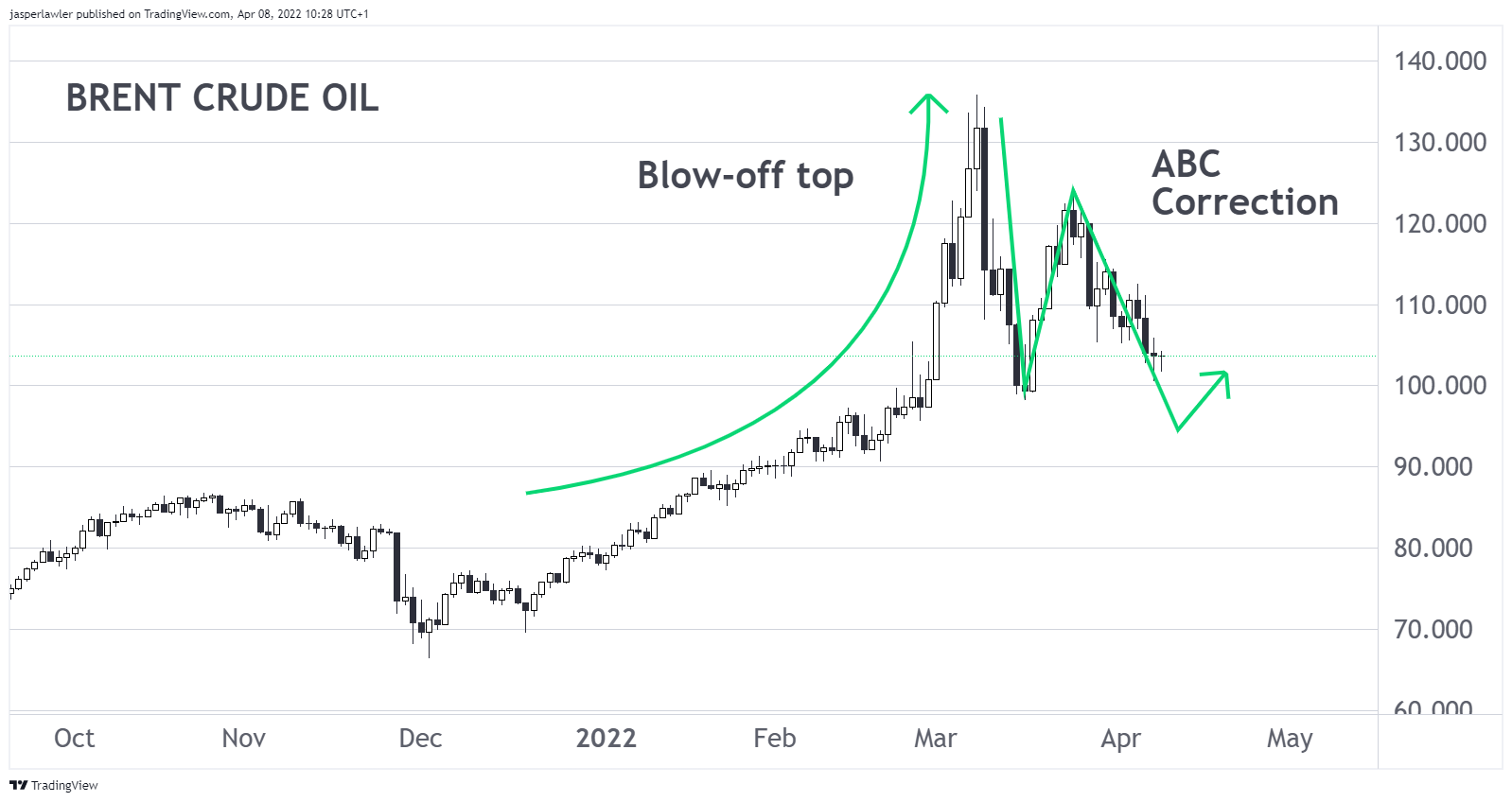One of the key market themes of 2022 has been excessive volatility in oil markets with the war in Ukraine, a record SPR release, OPEC and a new Iran deal all active considerations.
Brent crude futures hit highs of around $137 per barrel this year before recoiling and trading back down to lows of $97.
Currently, the market is sitting around the $108 level and the big question for traders now is whether a new record high is coming – or whether the top is already in.
Factors Driving Oil Prices Higher
Uncertainty Around War in Ukraine
The main catalyst behind the almost 61% rally in Brent crude YTD has been the invasion of Ukraine. News of the Russian invasion prompted huge supply fears given Russia’s status as the third-largest global producer. Additionally, sanctions on Russian oil from the US and the threat of similar efforts from the EU have further exacerbated these supply concerns as many countries and companies cut ties with the Kremlin.
Natural Gas Rally Fuelling Oil Demand
Record highs in natural gas prices have also contributed to upward pressure on oil prices. With shale prices already higher ahead of the conflict, we were already seeing more businesses and consumers switching back to oil from natural gas, thereby increasing demand for oil and reversing a trend that had been in place across recent years.
Post-Pandemic Recovery
We’ve seen a protracted pickup in global economic activity and demand as the world continues to transition out of the pandemic. The rebound in global travel in particular has been a big driver of support for oil along with increasing world trade.
Factors Which Have Driven Oil Lower from Recent Highs
Peace Talks Optimism
Since the invasion, prices have corrected sharply lower from those high levels not seen since 2008. The initial move was largely reactionary reflecting the shock and fear in response to news of the invasion. As the reality of the conflict has since set in (protracted conflict vs Russian take over) and with peace talks underway, fuelling optimism over a potential ceasefire or peace deal, oil prices have been impacted lower.
Strategic Oil Reserve Releases
Additionally, governments around the globe have been involved in coordinated releases from strategic oil reserves, including major operations from the members of the International Energy Agency, in a bid to bring prices down. The US has made two such releases from its own SPR (world’s largest emergency oil reserve) and is reportedly considering a third release, which would mark the third action in six months. The US has currently released around 50 million barrels and is considering releasing a further 180 million barrels.
US – Iran Nuclear Talks Restart
Democrats under Joe Biden took the unsurprising decision of restarting talks with Iran over the Obama-era nuclear deal which the US exited under the Trump administration. The goal was to agree on a new nuclear deal with Iran, allowing for the lifting of restrictions against Iranian oil exports, thereby bringing a huge amount of oil back online.
The talks restarting was clearly bearish for oil prices and saw the market impacted lower. However, a deal has yet to be agreed with negotiations this week hitting a stalemate as both sides increase their demands. Should talks fail or be suspended temporarily, this would no doubt be taken as a firmly bullish signal by oil traders near-term.
OPEC Sticks to Gradual Output Increase
Given higher oil prices, global leaders have increasingly called for OPEC to step up its oil production in a bid to curtail the rally. OPEC has been gradually unwinding the huge production cuts put in place across the pandemic at a rate of 400k barrels per month. As yet, OPEC -and the wider group including Russia, OPEC+ has refused to satisfy demand for greater output, sticking to its own path of gradual increases.
With oil prices having now cooled from the initial post-invasion highs, OPEC appears unlikely to suddenly agree to lift output any faster. Additionally, with several OPEC members failing to live up to the current quotas, there are questions around the impact any increases might have anyway until adherence levels are corrected.
Where to Next for Oil?
Ukraine Conflict Remains KeyLooking ahead then, the most important factor to monitor is clearly the conflict in Ukraine. With the conflict dragging on and an immediate cessation of fighting appearing unlikely, oil prices look likely to retain an upside skew. Even in the event that a ceasefire or peace deal is agreed, it is highly unlikely that current supply disruptions resolve themselves quickly, again keeping oil supported.
Post-Invasion LandscapeFurthermore, it looks increasingly unlikely that countries would seek to deal with Russia in the way they have previously meaning that there will likely be a difficult period of transition for global oil. Alongside this, the risk of further violence remains high even if a deal is done meaning that oil prices will remain highly neurotic and volatile to news flow from the region going forward.
Technical Charts Suggest Higher PricesFinally, then, we might consider the technical landscape.

Source: FlowBank / TradingView
The Brent chart shows oil prices potentially in a corrective ABC pattern currently. This would suggest a further dip lower to around $90, where the pattern completes, before a continuation higher.
Alternatively, we can look at the current market action as consolidation following a blow-off top within the upward trend. Recent COT data showed a large clear out of long positions in oil, suggesting plenty of room for a fresh surge in demand.





